The implementation of chain abstraction is a long-term battle, and the transformation of on-chain transaction paradigms has just begun.
Author: HelloLydia¹³
2024 is undoubtedly the inaugural year of chain abstraction. We have witnessed the narrative evolve from nothing to something, and then to product realization. After 12 months of effort, experience has proven to us that both the argument that chain abstraction is useless and the argument for its quick victory are incorrect. The transformation of on-chain transaction paradigms is bound to be a long-term battle.
My Story: From Chain Abstraction Researcher to Builder
My interest in chain abstraction originated from a conversation in July with @coin_casanova while I was a researcher at Mint Ventures. I gained a small wave of attention from a few research reports, and that's how I connected with Casa.
One day, Casa suggested I look into $ACX (the token of Across Protocol, which launched on Binance in the last month of 2024). At first glance, it seemed like a cross-chain bridge, a relic of the previous cycle, but upon closer inspection, I found that Across uses an "intent-based architecture" and truly achieves faster speeds and lower costs than other cross-chain solutions. The Across team also collaborated with Uniswap to launch the cross-chain intent standard ERC-7683.
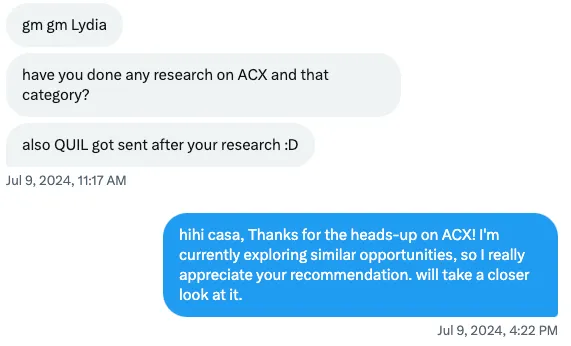
As I delved deeper into my research on $ACX, I found myself falling down a rabbit hole of new concepts: cross-chain bridges, cross-chain communication, interoperability, intent, chain abstraction… it was all quite confusing. As a researcher, I am very selective about the concepts I choose and use, but at that time, I couldn't find any articles in either the Chinese or English communities that could help clarify these conceptual relationships. So, I decided to roll up my sleeves and write one myself, titled “Using Problems as a Method: A New Framework for Understanding Chain Abstraction.”

I chose "chain abstraction" as my research subject instead of cross-chain or interoperability because in my classification, chain abstraction is a very high-dimensional narrative that encompasses many specific technical paths, so I included cross-chain and interoperability within chain abstraction. In this research report, I emphasized my optimism about adopting intent architecture and user-facing chain abstraction solutions—following the trail, you can trace it up to Across Protocol and down to UniversalX@UseUniversalX, which was launched less than a month ago.
Interestingly, during the writing process of this research report, I noticed that the Particle Network Blog (@CarlosCanCab, @TABASCOweb3) covered a wealth of very professional research on chain abstraction. Combined with Li.Fi’s Blog (@arjunnchand), it basically helped me complete my foundational knowledge from the most classical cross-chain bridges to the latest chain abstraction. I was also pleased to include Particle Network in my chain abstraction project diagram.
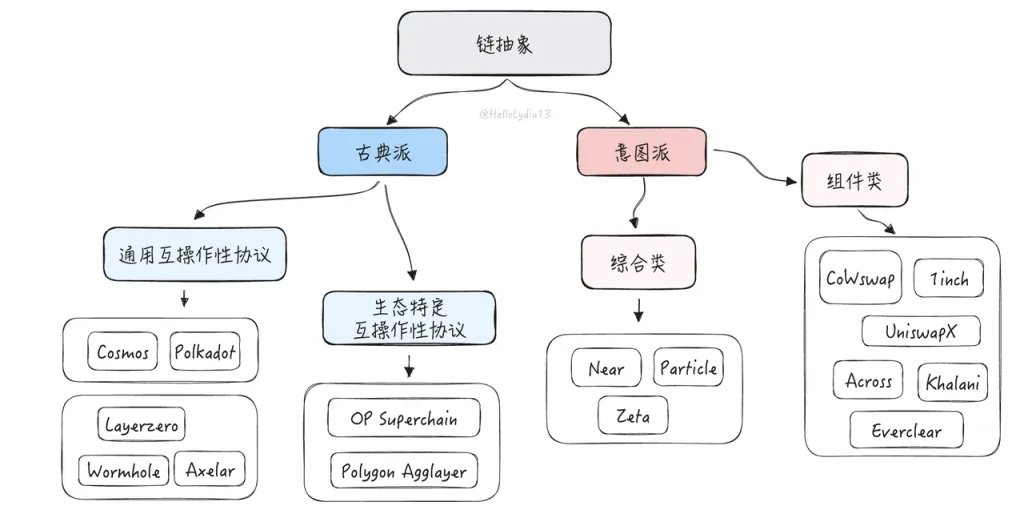
One day in October, the CEO of Particle Network @0xpengyu reached out to me through a mutual friend. After a practical yet unconventional brainstorming session, my enthusiasm for the chain abstraction cause expanded to the point where I felt the need to jump in immediately. The gears of fate turned into place, and I joined Particle Network, taking on the role of researcher while also overseeing the overall development of the Chinese community.
Two Rebuttals: The Argument that Chain Abstraction is Useless is Incorrect, and the Quick Victory Argument is Also Incorrect
My research journey at Particle Network began with a series called "Clarifying Misunderstandings." This is because, although chain abstraction has already established a mature system in the West, a large amount of research content has not been systematically disseminated to the Chinese community, leading to many misunderstandings derived from the literal meaning. To address this, I wrote four articles outlining nine major misunderstandings about chain abstraction (vs cross-chain bridges, intent, multi-chain wallets, etc.) and provided a formal definition.
“Common Misunderstandings about 'Chain Abstraction' (Part One)”
“Common Misunderstandings about 'Chain Abstraction' (Part Two)”
“Common Misunderstandings about 'Chain Abstraction' (Part Three)”
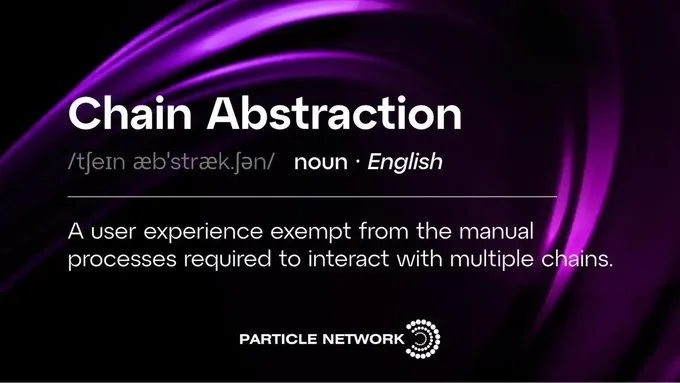
Rebuttal to "Chain Abstraction is Useless"
These articles later became the opportunity and driving force for me to engage in discussions about chain abstraction. Sure enough, in the context of the market's overall indifference to the narrative, promoting a new narrative of chain abstraction first attracted a wave of "chain abstraction is useless" voices. The views of this group are nothing more than what I summarized and analyzed in the three common misunderstandings: "I understand chain abstraction; it's just xxx… old wine in a new bottle… there's no need for it…"
The reason why the argument that "chain abstraction is useless" is incorrect is that their understanding of chain abstraction comes from a one-sided, mechanical, and static perspective, simply equating chain abstraction with things they have seen and are familiar with, and refusing to see the innovative points and significance of progress in chain abstraction without understanding the evolution of the track.
This can be further divided into two types of errors:
One type is a fundamental error, indicating a systemic bias and blindness, the most representative being the belief that there will only be one or two chains in the future of Web3. The response to this type of error is simple—it's impossible to build the entire Web3 on a single state machine. However, correcting this viewpoint is quite difficult because it fundamentally refuses to see other possibilities beyond their own positions.
The other type is an incidental error, such as confusing chain abstraction with multi-chain wallets, cross-chain bridges, and intent. These errors can generally be resolved by reading my articles, which is also the main significance of our ongoing efforts to popularize chain abstraction.
Rebuttal to "Chain Abstraction Can Achieve Quick Victory"
With the advancement of the chain abstraction narrative and the delivery progress of chain abstraction products from leading projects like Near, Uniswap, Safe, and Particle Network, chain abstraction has successfully attracted more attention from CEX and CEX users, sparking a wave of interest in chain abstraction by the end of 2024. Suddenly, chain abstraction seems to have become a consensus for everyone about the future, but beneath the hype, we see another layer of crisis—the "quick victory" argument for chain abstraction.
Specifically, some people underestimate the objective technical difficulty of achieving chain abstraction, ignoring that chain abstraction is a complex, systemic project that involves the restructuring and optimization of infrastructure, middleware, and application layers. They essentially still hold the outdated view that "chain abstraction is just a repackaging of xxx," leading them to have unrealistic optimism about the speed of chain abstraction's adoption—thinking that xxx projects can also do it, they just haven't done it yet, and once they do, it will be quick.
Others acknowledge that chain abstraction is a high-barrier track, but they are overly pessimistic about the current market players, thus turning to hope that the wallet teams of exchanges will "enter the field" and "attack from a lower dimension," quickly unifying the market. They do not understand that chain abstraction has never been just another isolated infra narrative, nor is it a simple feature stack; rather, it is a mature track that has developed in a traceable manner as infrastructures like AA, modularization, solver networks, AltVM, and Appchain have matured, with deep foundations among the leading players here.
To summarize the issues:
Is chain abstraction useless? — No. This idea is a shortsighted error, a case of missing the forest for the trees. Chain abstraction will ultimately be realized.
Can chain abstraction achieve quick victory? — No. This idea commits the error of being far-sighted, thinking they have a lofty perspective. The transformation of on-chain transaction paradigms represented by chain abstraction is a long-term battle.
Phase Analysis: Why the Transformation of On-Chain Transaction Paradigms is a Long-Term Battle?
The Universality and Specificity of Contradictions
Let’s first analyze from the universality of contradictions. Like all forms of new and old alternation, the penetration of chain abstraction applications requires time, and the migration of on-chain transaction paradigms requires time. In this process, we will see that the old, fragmented multi-chain ecosystem is difficult to sustain, and the development of applications built upon it faces increasingly obvious bottlenecks, while more and more dApps adopting chain abstraction architecture will gradually emerge. Unknowingly, chain abstraction will become the standard configuration for almost all on-chain scenarios, and there will definitely be a scenario where the potential of chain abstraction + dApp will completely explode.
Having discussed universality, let's now talk about the specificity of chain abstraction + on-chain transactions. Why do we believe that trading scenarios are the opportunity for the explosion of chain abstraction? Because this scenario is akin to the adult industry in Web2, serving as the first landing point for all emerging technologies (VR, AR, mobile internet, AI). The reconstruction of Web3 trading scenarios is the most anticipated native narrative of 2025, with the biggest opportunity being the possibility of a fully on-chain CEX brought about by chain abstraction. The combination of permissionless DEX assets + self-custody accounts + CEX-level liquidity experience = the next generation of on-chain trading platforms. All three requirements are indispensable.
Basis and Phases of the Long-Term Battle
So, some may ask, how long will this long-term battle last? The logic of chain abstraction seems so straightforward; when will it explode? — No one can provide an accurate prediction here, but we can analyze the various parties involved and observe the changes in their power.
We must first acknowledge that the transformation of on-chain transaction paradigms relies on the continuous prosperity of new on-chain assets and new users. Since the inception of Pump.fun, there has been a massive explosion of on-chain assets, with Meme and AI agents providing ample speculation points and opportunities for benefit, leading users to begin migrating from CEX to on-chain. At this point, the main contradiction has become the significant increase in trading demand after the explosion of assets and the centralized exchanges' "editor's choice" listing model, which cannot cover the hotspots in a large and timely manner. In terms of the attractiveness of spot trading, Trading Bots, DEX aggregators, and in-wallet trading functions have all taken a share from centralized exchanges below Tier 1.
However, it is still too early to declare that DEX will completely replace CEX. Tier 1 exchanges still enjoy listing credits and deep liquidity for their spot trading business, and perpetual contracts are also an important source of revenue for most CEXs. Clearly, users of Binance Square do not all need to convert to on-chain P players to make money; that is one point.
Moreover, as fat applications gradually replace fat protocols, more and more applications will choose to launch via Appchain or App Rollup, making a multi-chain future a foregone conclusion. However, the currently fragmented multi-chain environment greatly hinders users' exploration and management of multi-chain assets. Although there has been progress with AA and interoperability protocols within various ecosystems, user education, developer education, and product adoption are not achieved overnight; that is the second point.
Therefore, while on-chain assets are greatly enriched, users are migrating to on-chain, and the general direction of a multi-chain future is certain, the situation during the process is continuously changing. However, as long as we analyze the trends, we can clearly identify the foundation of chain abstraction products — seamlessly connecting and exploring the potential of the multi-chain world, including liquidity, users, and developers. For example, UniversalX's fundamental competitive advantage lies in liquidity; by grasping this point, we can identify the most promising multi-chain trading user groups and convert them into UniversalX's most loyal users (guess how many times I've recently heard user feedback like "once I used UniversalX, I couldn't go back").
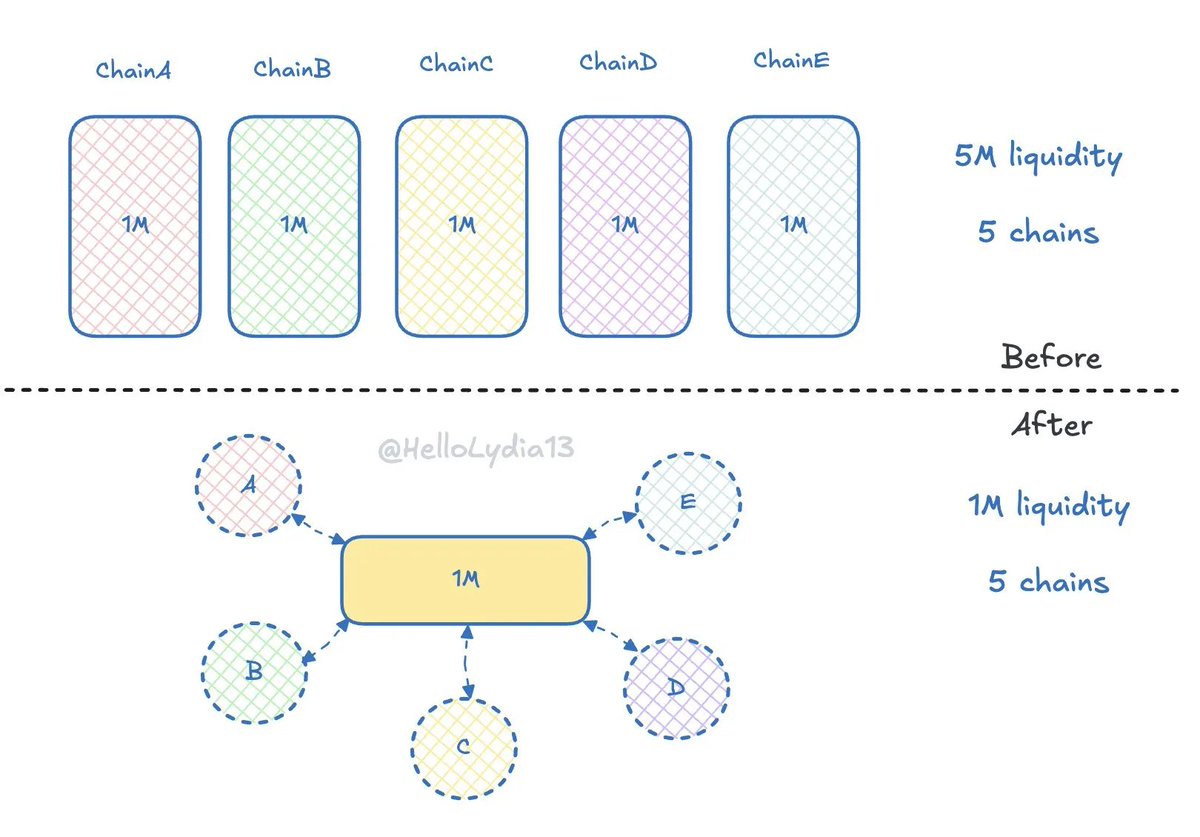
As the Ultimate Chain Abstraction Exchange
Now let's discuss why time will ultimately favor chain abstraction exchanges represented by UniversalX. Why not multi-chain wallets, Trading Bots, and aggregators?
First is the non-custodial attribute, which is in contrast to the custodial wallets of Trading Bots. We are not saying that custodial wallets should not exist or will disappear; rather, they cannot exist independently. Users ultimately need to transfer their assets to non-custodial wallets. With the increasing awareness of on-chain security, we believe that products adhering to non-custodial attributes will become more prevalent.
Secondly, there is the chain abstraction attribute, which contrasts with multi-chain wallets and aggregators. Current multi-chain wallets merely "connect" to multiple chains, serving a consolidating function. Although many wallets have introduced some optimizations regarding gas payments, fundamentally, users' assets remain scattered across different chains without being interconnected. During usage, they still need to manually switch between different chains and bridge assets. However, we cannot expect every user to be well-versed in knowledge from private key management to new chain bridging. I previously created a popular science piece on a multi-chain wallet, and its complexity was quite daunting even for someone like me who prides themselves on being knowledgeable. As for aggregators, most currently only support single chains, and a small number support multi-chain, with a limited range of covered assets, far from achieving the effect of "bridging multiple chains."
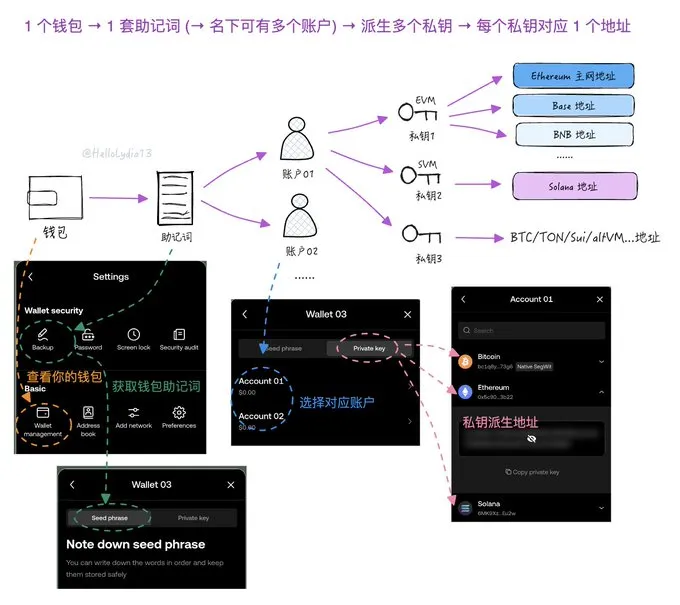
Finally, we arrive at the specific competitive aspects. The market for on-chain trading products will likely repeat a three-stage process: 1) demand competition; 2) fee competition; 3) business model competition.
The plethora of new tools and products currently emerging proves that we are still in the first stage of demand competition, but smart money, address monitoring, chip analysis, and other specific product functions have already shown signs of commercialization. Once user demand has been sufficiently met by the products available on the market, we will enter the second stage, which is the fee competition stage. To capture the market, products will engage in "price wars" until a relatively stable state is reached. The final stage, which tests the long-term operational capabilities of projects, is business model competition.
The demand that UniversalX meets has been analyzed previously — it firmly grasps the foundation of seamless liquidity across multiple chains, without affecting the integration of increasingly commoditized advanced data functions.
As the trend of multi-chain becomes more confirmed, the demand for UniversalX becomes clearer; the clearer the demand for UniversalX, the more the multi-chain trend will be confirmed. This positive spiral will grant UniversalX a bargaining power distinct from non-chain abstraction products, giving it an advantage in the fee competition stage.
In the final stage of business model competition, UniversalX's answer is also very clear — L1 + infrastructure + flagship applications. L1 Particle Chain represents a public chain business model, the chain abstraction infrastructure Universal Account represents a B2B2C business model, and UniversalX is a typical 2C exchange model, with each layer being clear and mutually supportive.
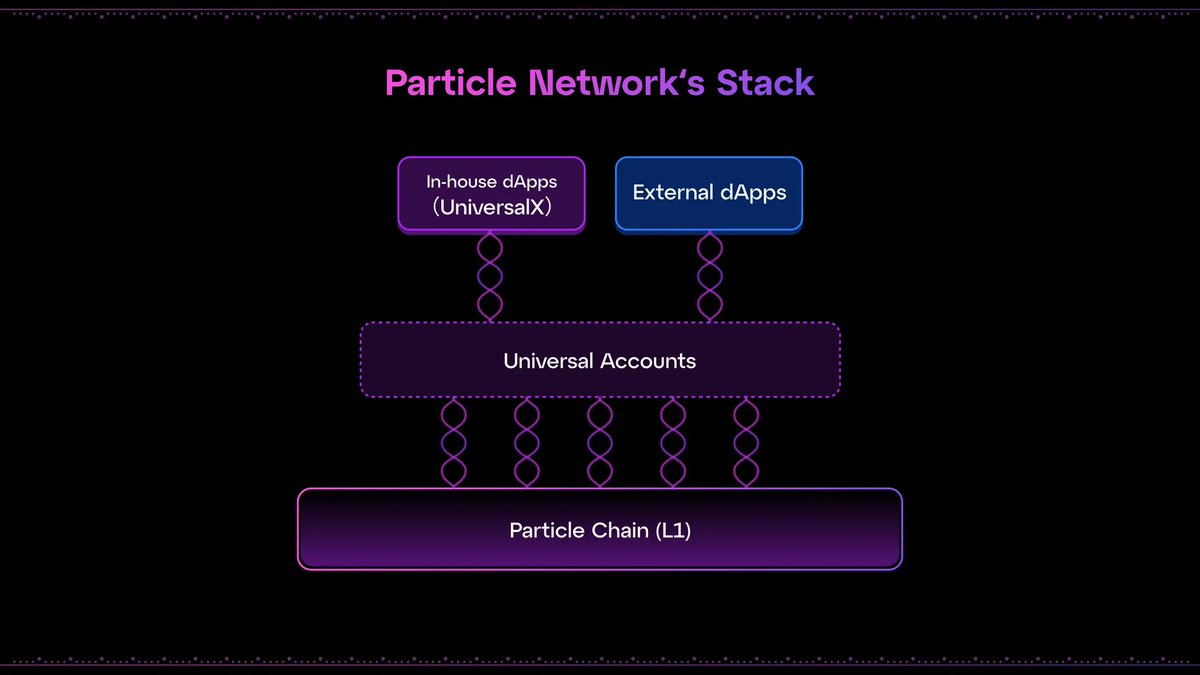
Conclusion
With this, my discussion is nearly complete. This is a lengthy article, but it is not a fluff piece. What I hope to convey is simply two points:
1) As builders, we never lack struggles and doubts, but we always choose to believe and move forward.
2) The realization of chain abstraction is a long-term battle, and the transformation of on-chain transaction paradigms has just begun.
My research and viewpoints have their shortcomings, and I hope to receive your corrections and additions. I look forward to your attention and support!
免责声明:本文章仅代表作者个人观点,不代表本平台的立场和观点。本文章仅供信息分享,不构成对任何人的任何投资建议。用户与作者之间的任何争议,与本平台无关。如网页中刊载的文章或图片涉及侵权,请提供相关的权利证明和身份证明发送邮件到support@aicoin.com,本平台相关工作人员将会进行核查。




